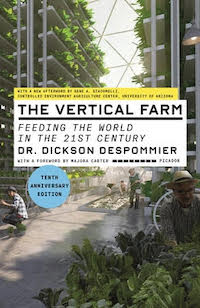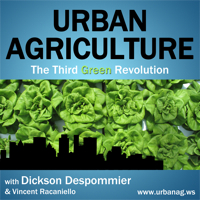Type out the term vertical farm on Google and you might be surprised at the number of hits. The last time I did (11:21am July 16th, 2018), there were 165 million of them. Global awareness of the term “vertical farm” has hit the big time, as they would say in show biz. What does this mean for the fledgling industry of vertical farming? All one has to do to find that out is to keep going online and typing out vertical farm,and the News section of Google will happily identify the day’s leading stories on the establishment of VFs. In short, investment is up and construction is booming in places like the Middle East, Europe, and The United States.
For example, Emirates Airlines in Dubai is constructing a 150,000 square foot vertical farm facility to supply fresh leafy greens for the salads on all it flights originating from that city. Not to be left out, the city of Dubai has announced plans to construct twelve vertical farms to enable Dubai to become more independent of the food system that currently supplies over 90 percent of the imported fresh produce its citizens consume. Companies have also stepped up their R&D on indoor farming technologies, as evidenced by the growth of industrial trade shows such as Green Tech in Amsterdam, The Netherlands, and Seeds and Chips in Milan, Italy.
A closer look at what has changed over the past few years in vertical farming technologies tells the same story. For example, Philips was primarily known as a company whose clients included municipalities (LED-based street lights and stop lights), and the biomedical research community (a wide variety of sophisticated electronic devices). Within the last three years, however, Phillips has turned its attention to enabling the indoor farming industry to employ more efficient LED grow lights. To do so, they have established an experimental vertical farm (VF) located within their research headquarters in Eindhoven, in which they test out the latest LED grow lighting system developments (BTW, that term recently garnered over 70 million Google hits) from their research laboratories. The employees benefit from enjoying freshly prepared lunches derived from the VF, and the company gets unsolicited endorsements from them, as they brag about how great it is to work for such an altruistic management team.
In the meantime, the training of new indoor growing experts is beginning to emerge onto the VF scene from places like The University of Arizona (Biosphere 2 is their newest training facility for the Controlled Environment Agriculture Center), C. Davis, and Penn State University in the US and Wageningen University in the Netherlands. New employment opportunities are popping up all over the developed world, as the idea of indoor agriculture becomes more widely accepted.
Therein lies the rub. What about the less developed world and their dire need for clean drinking water and diseases-free produce? Financing has to be one of the main reasons VFs have not been established in places like Bangladesh, Sub-Saharan Africa, or in many countries in Central and South American. On top of that, all this new VF activity comes at a time when there is a shortage of qualified indoor growers. Without this essential workforce, VFs are bound to fail. Education is key. In Shanghai, city planners are seriously considering establishing a state-of-the-art urban agriculture training center. Sasaki architects have submitting a detailed set of plans for just such a facility. If they get the go-ahead from the powers that be, then Shanghai will instantly become an important player in indoor farming education and could become a world leader in helping the rest of the world establish the next generation of vertical farms. The expectation is that the current rate of growth in the vertical farm industry will likely continue or even increase over the next 5-10 years. If this proves to be the case, then a sustainable, resilient future for the built environment will be assured, as urban agriculture becomes commonplace for city dwellers shopping for their food anywhere in the world. It is also anticipated that the natural world will experience a similar renaissance, as abandoned farmland returns to its original ecological function.


{ 0 comments… add one now }